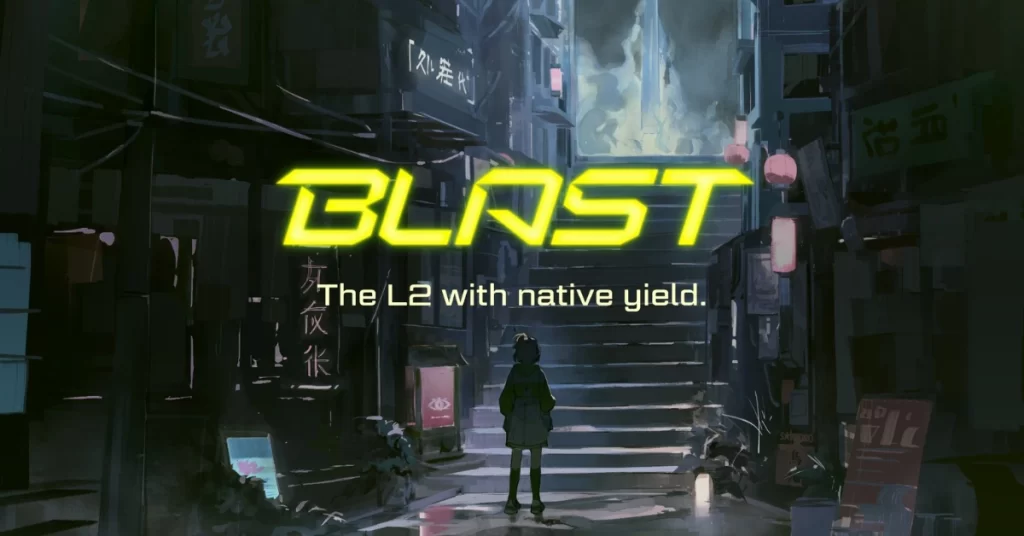New Arrivals In The Blast Ecosystem: The First Launchpad

The post New Arrivals In The Blast Ecosystem: The First Launchpad appeared first on Coinpedia Fintech News
While the Merge of the Ethereum network remains one of the most well-known updates in the crypto industry, later updates to the network have also left their mark. Blast, for example, an L2 Ethereum-based protocol, proudly proclaims that it was only made possible by the Shanghai update. The update allowed for the withdrawal of staked Ether, giving users more flexibility and an opportunity for Blast to develop the first Ethereum L2 with native yield for ETH and stablecoins. The Shanghai update subsequently opened up more opportunities for the projects building on Blast, including the ecosystem’s first launchpad, Blastup, which just went live.
By introducing native yield to its network, Blast has been able to generate a higher interest rate for users to benefit from, offering 4% for Ethereum and 5% for stablecoins. The yield that Blast earns from RWA protocols and ETH staking is automatically shared with all Blast users, making such rates achievable and protecting the value of users’ assets from depreciation. Unlike most Layer 2 protocols, gas fee revenue is not retained by the network and is programmatically returned to developers, who can either keep the revenue or use it to lower gas fees for their users. These features allowed Blast to become the first Layer2 protocol to reach $1B TVL in 35 days in preparation for the mainnet launch in February. Right now, the Blast Testnet has already gone live.
The launch of the Blast Testnet also marks the start of the Blast Big Bang decentralized application competition, which is open to projects at any stage, whether it is nearing completion or just an idea so far. Submissions will be judged on concept and execution, with the final criterion being “Blast-native”, testing whether Blast’s native features have been used to create something unattainable on other chains. Registration is already open and projects can be submitted until February 21st, along with a required 3-minute demo video. Once the submissions close, the Big Bang competition judges will consider top projects on a live stream, announcing winners at the end of it.
Winners in the eight available categories will share the Blast airdrop, get the opportunity to connect with top investors, get in front of 104k users and $1.4B TBL, and most importantly, grow the already blossoming Blast ecosystem, which gained a new project just yesterday.
The first Blast-based launchpad, Blastup, for early-stage projects, went live on January 17th and states confidently how it is planning to contribute to the Blast ecosystem. Blastup focuses on four main features: Project Screening, Launchpad Accelerator, Fair Distribution, and Passive Income. The first two simplify organizational processes, by screening the quality of released projects and assisting with any documentation and tokenomics preparation. The latter two concern Blastup tokens whose holders can access free tokens from supported projects and obtain a reserved allocation for future IDO projects.
New Arrivals In The Blast Ecosystem: The First Launchpad

The post New Arrivals In The Blast Ecosystem: The First Launchpad appeared first on Coinpedia Fintech News
While the Merge of the Ethereum network remains one of the most well-known updates in the crypto industry, later updates to the network have also left their mark. Blast, for example, an L2 Ethereum-based protocol, proudly proclaims that it was only made possible by the Shanghai update. The update allowed for the withdrawal of staked Ether, giving users more flexibility and an opportunity for Blast to develop the first Ethereum L2 with native yield for ETH and stablecoins. The Shanghai update subsequently opened up more opportunities for the projects building on Blast, including the ecosystem’s first launchpad, Blastup, which just went live.
By introducing native yield to its network, Blast has been able to generate a higher interest rate for users to benefit from, offering 4% for Ethereum and 5% for stablecoins. The yield that Blast earns from RWA protocols and ETH staking is automatically shared with all Blast users, making such rates achievable and protecting the value of users’ assets from depreciation. Unlike most Layer 2 protocols, gas fee revenue is not retained by the network and is programmatically returned to developers, who can either keep the revenue or use it to lower gas fees for their users. These features allowed Blast to become the first Layer2 protocol to reach $1B TVL in 35 days in preparation for the mainnet launch in February. Right now, the Blast Testnet has already gone live.
The launch of the Blast Testnet also marks the start of the Blast Big Bang decentralized application competition, which is open to projects at any stage, whether it is nearing completion or just an idea so far. Submissions will be judged on concept and execution, with the final criterion being “Blast-native”, testing whether Blast’s native features have been used to create something unattainable on other chains. Registration is already open and projects can be submitted until February 21st, along with a required 3-minute demo video. Once the submissions close, the Big Bang competition judges will consider top projects on a live stream, announcing winners at the end of it.
Winners in the eight available categories will share the Blast airdrop, get the opportunity to connect with top investors, get in front of 104k users and $1.4B TBL, and most importantly, grow the already blossoming Blast ecosystem, which gained a new project just yesterday.
The first Blast-based launchpad, Blastup, for early-stage projects, went live on January 17th and states confidently how it is planning to contribute to the Blast ecosystem. Blastup focuses on four main features: Project Screening, Launchpad Accelerator, Fair Distribution, and Passive Income. The first two simplify organizational processes, by screening the quality of released projects and assisting with any documentation and tokenomics preparation. The latter two concern Blastup tokens whose holders can access free tokens from supported projects and obtain a reserved allocation for future IDO projects.